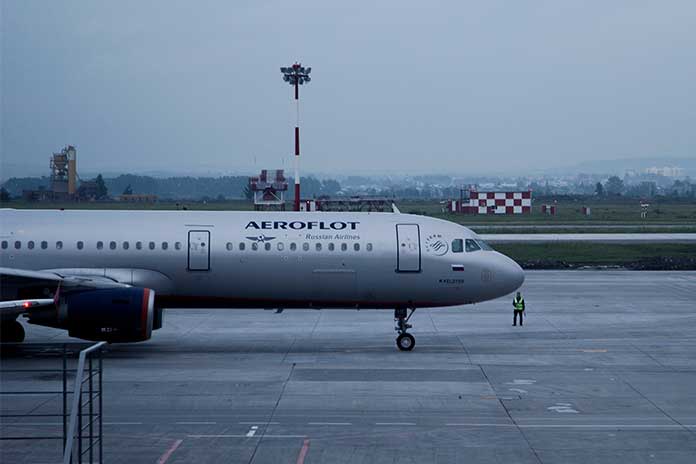The aviation industry is slowly recovering from the COVID-19 pandemic and is experiencing a new economic boom. In addition to steadily increasing passenger numbers, cargo planes, for example, are increasingly being used again. Manufacturers must react to this development accordingly, deliver existing orders as quickly as possible, and prepare for the surge in commercial, cargo, and defense aircraft orders. At the same time, it is important to reduce carbon emissions and achieve climate-friendly transport goals set at the UN climate conference COP26 in Glasgow.
The boom in the aviation industry is being driven by innovative technologies such as artificial intelligence (AI), machine learning (ML), computer vision, predictive analytics, and 3D printing. Original Equipment Manufacturers (OEMs) can use the technologies to address and achieve multiple goals at once: better flight efficiency, operational performance, throughput, quality improvement, maximizing capacity utilization, reducing backlogs, and reducing carbon emissions. Cloud infrastructure also promotes the adoption of technologies; the additional integration of AI-controlled solutions in core processes also significantly accelerates automation.
AI On Board
The classic aircraft cockpit had evolved significantly since 1914, when pilot and aviation pioneer Lawrence Sperry presented the first autopilot system at the Concours de la Sécurité en Aéroplane in Paris. The systems are equipped with numerous instruments and control algorithms that support pilots during night flights and adverse weather conditions. In addition, automated systems reduce the workload of pilots. They ensure the reliable execution of operational processes and improve comfort for passengers on longer journeys. In the future, AI will also be used more intensively here.
The European Aviation High-Level Group on AI, composed of leading representatives of the European aviation sector, was founded to research and expand the application of AI. The goal is to maximize the adoption of digital tools and develop an AI roadmap for the European aviation industry. In addition, the extensive application of AI frameworks in the aerospace industry is to be promoted.
AI systems transform the entire operation – the assembly line, the maintenance, repair, and overhaul (MRO) hangar, the supply chain, customer service, business processes, and the flight experience for crew and travelers. With the help of AI-assisted design solutions, OEMs can replace carbon- and material-intensive production methods with sustainable alternatives such as composite materials. At the same time, ML models analyze real-world engineering and fleet data to improve AI applications. Big data analysis results are more accurate than statistical analysis, so decisions about safety, fatigue, or how to respond to emergencies can be made faster and better.
Cognitive solutions minimize human intervention throughout the value chain and support the implementation of Human Factors Engineering (HFE) inside and outside the cockpit. AI/ML systems enable design and production teams to define target requirements and visualize results regarding corrosion detection or landing guidance. In addition, condition-based MRO services increase aircraft integrity and service life. However, autonomous systems require real-time data and automated actions for decision-making.
Data plays an important role in the development and training of cognitive software. An infinitely scalable IT infrastructure is a must to host, extrapolate and curate large datasets. In addition, it requires high computing/processing power and a reliable development environment to leverage simulation tools and digital platforms for prototyping, creating seamless human-machine interfaces, and testing applications before going live.
Data In The Cloud
The performance of AI/ML solutions depends on the quality and volume of data used to develop and train them. In addition, a robust simulation environment is required for rigorous testing. The cloud provides a scalable and resilient system for managing historical and validation datasets. Also, data scientists can replicate the operational, air traffic control, maintenance hangar, or cabin environment for testing and validation purposes before integrating AI systems into simple operations. In addition, the cloud supports AIOps tools, real-time collaboration between teams, test protocols for aerospace systems, mechanical parts, and critical equipment – this way, use cases are created faster.
Supply chain disruptions require near real-time visibility across the ecosystem. In addition to the financial losses, OEMs also face reputational risks due to dysfunctional supply chains. The cloud enables aerospace parts manufacturers, suppliers, and distributors, to mitigate the risks associated with 3D printing. Additive manufacturing has the potential to be used in both the inbound and aftermarket supply chains. Additionally, cloud-hosted procurement solutions enable a collaborative approach to sourcing 3D printed parts. Collaboration between aerospace OEMs, suppliers, airlines, MRO companies, and technology providers enables on-demand sourcing of critical components, ready-to-fly parts, and custom tooling. Intelligent, lean supply chains drastically reduce lead times while rationalizing inventory levels.
A cloud and AI-powered transformation in aviation go beyond smart fleet and maintenance. Robotic arms in production lines increase productivity and quality, ergonomic systems optimize the design of aircraft, manufacturing and MRO facilities, and IIoT solutions maximize fuel efficiency and worker utilization. The ultra-high-speed connectivity of 5G networks also improves in-flight diagnostics and shortens turnaround times on the ground.
OEMs can deploy algorithms at scale in the cloud to build resilient aircraft fleets, make small jets more affordable, and improve safety. In addition, data-driven autonomous systems simplify operations while reducing the environmental impact of aviation.


